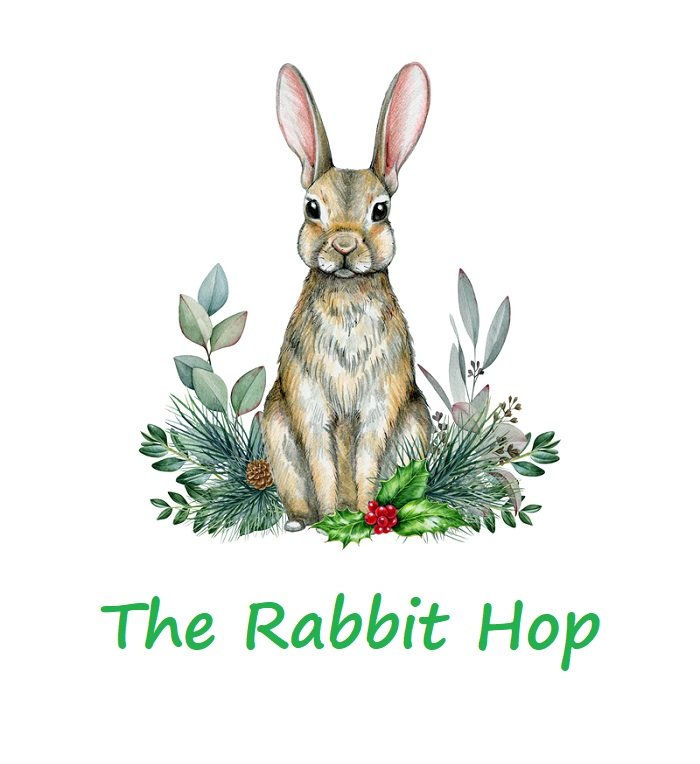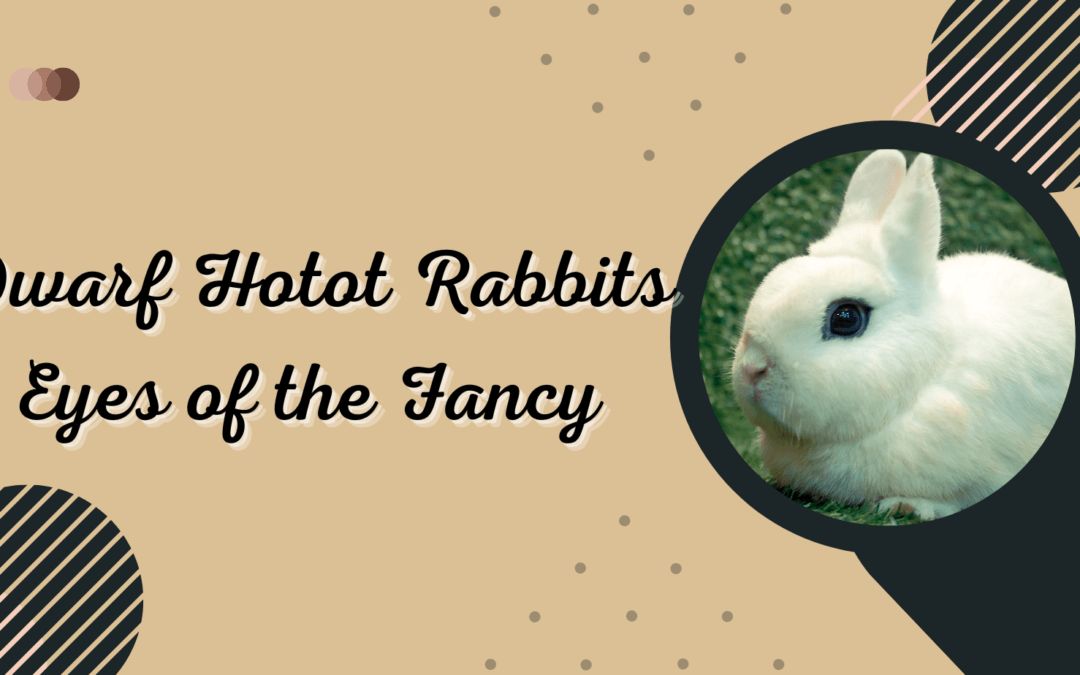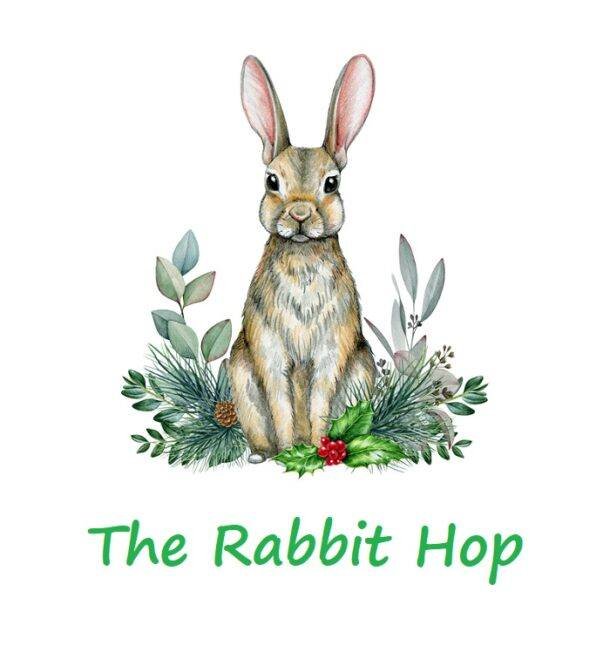Dwarf Hotot rabbits are distinct because of their black eye bands. They are like bunnies wearing eyeliner, making them more adorable. Aside from their unique appearance, their mood is also unpredictable. But overall, rabbit owners find them affectionate and friendly. Is the Dwarf Hotot rabbit breed the best pet for you? Learn more about this breed today!

Facts about Dwarf Hotot Rabbits
| Body Size | Dwarf |
| Body Weight | 2.5 lbs to 3.5 lbs |
| Body Shape | Compact |
| Lifespan | 7 to 10 years |
| Colors | All-white coat with black eye bands |
| Similar Breeds | Netherland Dwarf, Blanc de Hotot |
| Best Suited for | First-time owners, singles, seniors, and families with older children |
| Origin | Germany |
Background and History
The Dwarf Hotot rabbit breed doesn’t only have a unique appearance, but it also has a one-of-a-kind history. These bunnies came from the Blanc De Hotot, which originated in France in 1902. It was developed by Eugenie Bernhard. She was the second woman in history to create a new rabbit breed.
Two breeders from opposite sides of Germany developed the Dwarf Hotots in the 1970s. The West German breeder tried to make a Netherland Dwarf with the markings of the Hotot. He paired up a black and ruby-eyed white Netherland Dwarfs. It resulted in a Dutch rabbit with markings. This bunny was bred with a black Netherland Dwarf, leading to a Dwarf Hotot with black ears and spots on its back. Unfortunately, the breed was sickly and infertile.
On the other hand, the breeder from East Germany paired up a Blanc De Hotot with a REW Netherland Dwarf doe. This breed did not have the same markings as the Hotot due to the inconsistency. Despite the Berlin wall, the two breeders communicated and traded bunnies. The result of the two breeds was a Dwarf Hotot rabbit.
Elizabeth Forstinger brought Dwarf Hotots from Germany to the United States. It was in the 1970s. The breed’s first show was at the ARBA Convention in Syracuse, New York, in 1981. After a year, the American Dwarf Hotot was established. The following year, ARBA accepted Dwarf Hotot as a breed. Because of the black around their eyes, the Dwarf Hotot rabbits were called the “eyes of the fancy”.

Features of the Dwarf Hotot Rabbits
An average Dwarf Hotot rabbit breed only weighs about 2.5 lbs to 3.5 lbs. It looks like a loaf of bread. It is because its hindquarters are proportionate with its broad shoulders. This rabbit also has a compact body with a round, well-filled head. Its short neck is almost not invisible. Its short, thick-furred ears are erecting above its head.
What makes the Dwarf Hotot rabbits popular are their white coats and the black eye bands. These bands resemble eyeliner. However, some Dwarf Hotots are English-spotted or Dutch-marked. Although these rabbits are not qualified for rabbit shows, they can be used for breeding. Their rollback furs are short, dense, and glossy, making it easier to groom them.
A show-quality Dwarf Hotot must have vivid black eye bands that are only about ⅛ of an inch. It is considered a fault if the eye band is too thick or too thin. ARBA only acknowledges one color of the Dwarf Hotot rabbit breed. It is all-white with black eye bands.

Temperament and Behavior
Dwarf Hotot rabbits are known for their varying moods. They can be outgoing and mischievous but have grumpy and gloomy periods. But overall, they are affectionate and playful companions. If you spend enough time with them, you will discover how friendly and sociable they are. Besides their owners, they quickly get along with other rabbits and household pets.
These bunnies are also ideal pets for older children because of their size. Because of their size, small children may mishandle them, causing injuries. You must also remind your older children to keep the cages locked. These Dwarf Hatots may jump out of their cages when they get excited.
A Dwarf Hotot is suited for first-time owners, singles, seniors, and families. It is also an inactive breed but requires exercise and activities to remain healthy. As intelligent pets, small toys can help to keep Dwarf Hotots busy and preoccupied. You can also train and teach it with some tricks and games.
Female Dwarf Hotots eat their babies, so separating them from their mothers is vital. On the other hand, a male Dwarf Hotot may become aggressive to its partners during the mating season. It is because the bucks want to mate with non-receptive does.

Grooming Dwarf Hotot Rabbits
Grooming the coat of a Dwarf Hotot rabbit breed is easier than the long-haired bunnies. They have short and glossy fur that only requires brushing once a week. However, you must not forget to brush its coat to prevent it from being infested by mites and fleas. Ensure to groom it more frequently to prevent your bunny from ingesting its fur.
The best way to clean your bunny is by spot cleaning. Get a damp towel and gently rub it on the dirty area. You must never bathe your pet since it may suffer from shock or stress. A wet bunny is also prone to hypothermia and heart disease. Flies also like to lay their eggs in damp areas. Thus, ensure that your pet has a dry coat all the time.
Another grooming habit you should not forget is trimming your pet’s nails. Bunnies with long nails are more likely to injure themselves and their owners. Cutting your rabbit’s nails at least once a month is recommended. You can also place scratching and digging posts in its playpen to slow the nails’ growth.
Besides the rabbit’s coat and nails, trimming the Dwarf Hotot’s teeth is also crucial. As a dwarf breed, it is more prone to a malocclusion. The overgrowth of its teeth may result in health diseases like gastrointestinal stasis. Feeding your bunny with hay regularly will help in trimming its teeth.
Cleaning the ears of your bunny helps to prevent ear mites. The safest way to clean your rabbit’s ears is by getting a damp cloth and wiping its ears from the bottom up. Never wipe them in the opposite direction since it may push the ear wax deeper into the inner canals. Keep on wiping until the ear wax loosens.

Proper Diet
Dwarf Hotot rabbits have the same diet as other bunnies. They need a lot of hay as a source of fiber. Ideally, it must be 70 to 80 percent of their diet. Fiber sources like hay help the bunny to digest its food easily. It increases the motility in the bunny’s digestion. Aside from that, it also keeps the rabbit’s teeth strong and healthy.
You must also add leafy greens to a Dwarf Hotot rabbit breed’s diet. Vegetables are rich in vitamins and minerals, providing the nutrients your pet needs. However, you must wash them before giving them to your pet. Also, ensure that they are fresh enough. If your bunny doesn’t drink water after eating veggies, don’t worry. Vegetables are rich in water, keeping your pet hydrated.
Although fruits are highly nutritious, you must give them occasionally to your bunny. It is because they are rich in sugar that may lead to an imbalance in your pet’s guts. If you are about to give some to your bunny, slice them into small pieces. Avocados and fruits with seeds, like peaches and plums, must not be given to rabbits.
Keeping your rabbit hydrated is also vital to prevent heatstroke. It must have an unlimited supply of clean water every day. Aside from quenching its thirst, water regulates your bunny’s body temperature. During hot days, you can place a bowl of water inside the bunny’s hutch that may serve as a cooling agent.
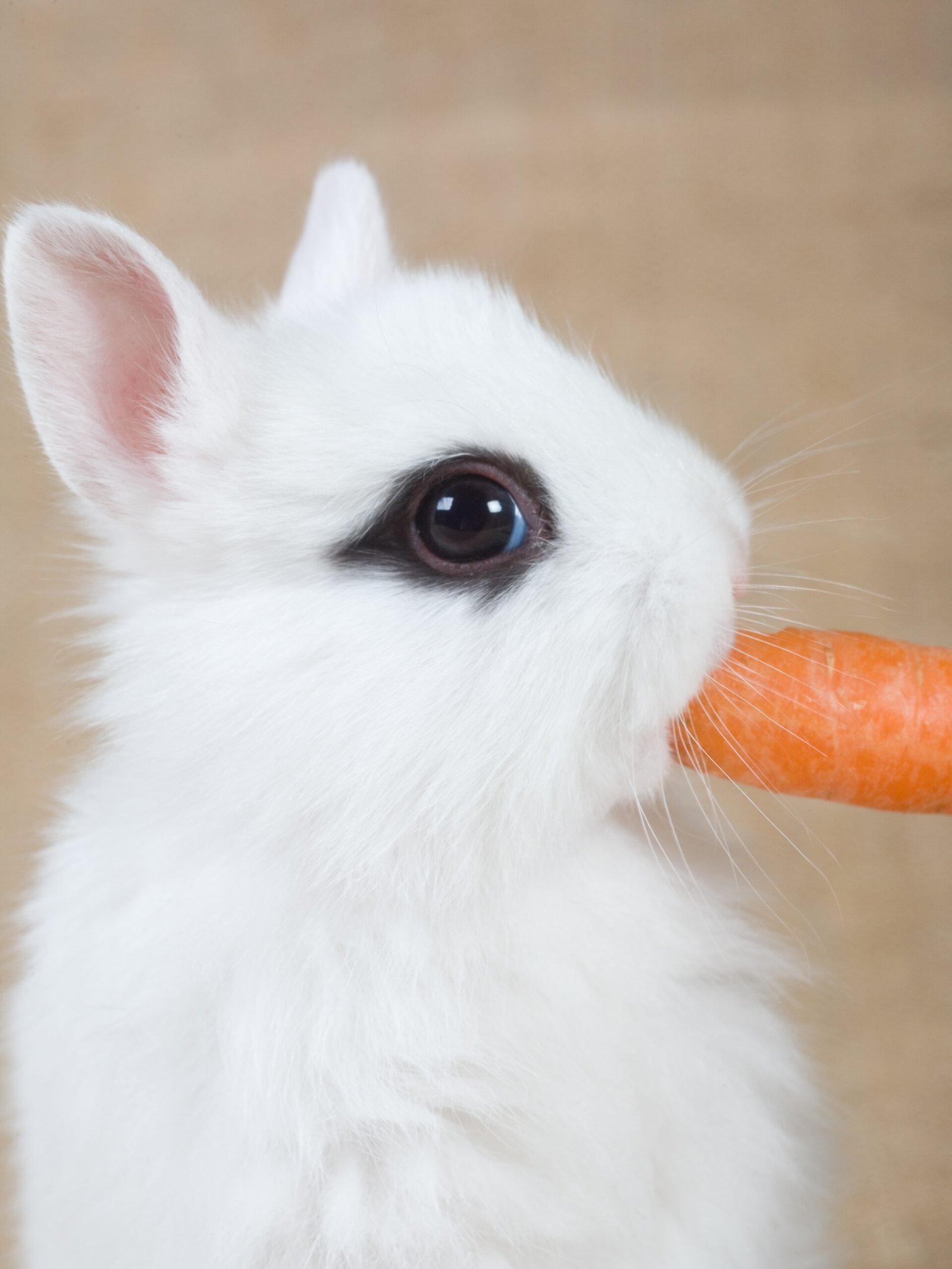
Habitat for Dwarf Hotot Rabbits
Because of the small size of the Dwarf Hotot rabbit breed, it doesn’t need to have a large cage. But it must be wide enough for your bunny to stretch and hop comfortably. The ideal cage size for a Dwarf Hotot is about 24” x 24” x 18”. Never use a wire bottom on the hutch since it may lead to sore hocks. Solid flooring or thick bedding is recommended. Don’t forget to provide the cage with a lock since this breed like to jump out of the enclosure when it gets excited.
If you want to keep your rabbit outdoors, ensure the cage is sturdy. Thus, it can withstand predators and weather. Placing it in the shade is crucial to protect your bunny against direct sunlight. The environment must be as quiet since bunnies are frightened by loud noises.
You can also let your bunny stay indoors. Through this setup, you can give your pet enough attention, and it will also enjoy its freedom. But don’t forget to make your house rabbit-proof. Since a Dwarf Hotot can be playful, it may hide under your carpet or chew the cables inside your home. You can also litter-train this breed, but you must be patient and committed.
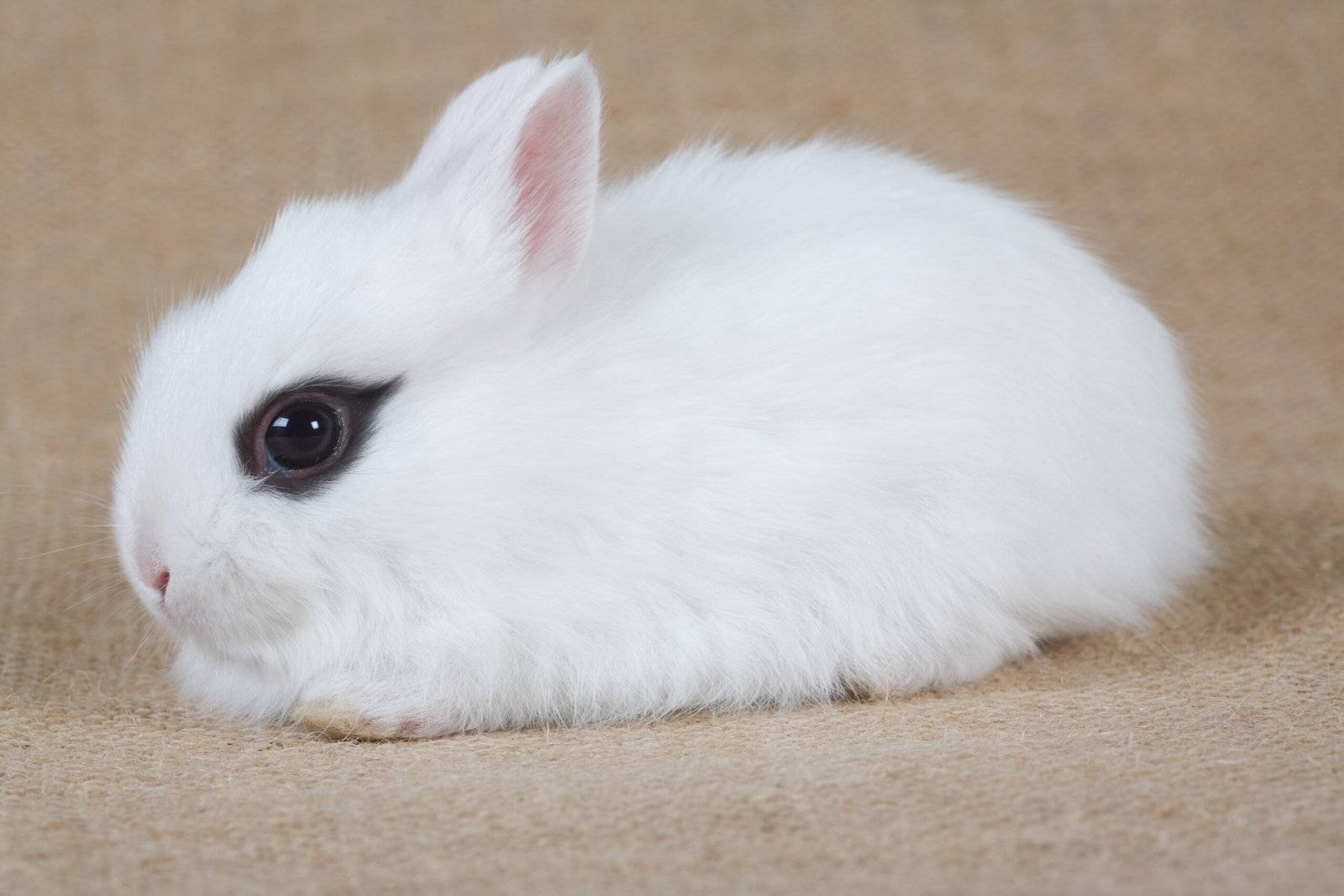
Health Issues of Dwarf Hotot Rabbits
Malocclusion
Dwarf rabbit breeds are more prone to malocclusion. Their upper and lower teeth are not aligned, causing overgrowth. It is because they have small heads and long jaws. Thus, the top incisors grow inwards while the bottom ones go outwards. If ignored, your bunny may suffer from jaw infections and digestive disorders.
The obvious sign of malocclusion is overgrown teeth. However, there are other symptoms that you may notice. Here are some of them:
- Swelling jaw
- Drooling
- Loss of appetite
- Reduced weight
- Pulling off the fur
- Frequent pawing at the mouth
Once you have noticed the mentioned symptoms, you must go to the vet. The vet may treat your bunny through periodic trimming. This procedure may require a four to nine weeks schedule. However, some owners find this treatment expensive and convenient. Another solution is a dental extraction.

Woolblock
Neglecting the hygiene of a Dwarf Hotot may lead to woolblock. It usually happens when the bunny is in shedding season. As it grooms itself, it ingests some of its wool. The ingested fur will get trapped inside the stomach of the rabbit. Unlike cats, rabbits cannot vomit furs. It may lead to severe problems like GI stasis.
Here are the common symptoms of woolblock that you must watch for:
- Abdominal pain
- Weight loss
- Fur in droppings
- Appetite loss
- Lethargy
- Dry hair
- Grinding teeth due to pain
- Diarrhea
To treat woodblock, the vet may administer IV fluids to your bunny to rehydrate your pet. High-fiber foods will also be given to the rabbit, improving its motility. Some medicines, like analgesics, may also be given to your pet. It may take one or two days before your bunny can pass stool and eat again. However, full recovery may take a couple of weeks.

Frequently Asked Questions
How much does a Dwarf Hotot rabbit breed cost?
The average cost of a Dwarf Hotot rabbit breed may range between $15 to $50. Its price may depend on the bunny’s quality and where you will purchase it. For a show-quality Dwarf Hotot, it may reach up to $100.

Are Dwarf Hotot rabbits ideal pets for first-time rabbit owners?
Absolutely! These bunnies are affectionate and friendly. They are also easy to take care of because they are small. You only have to provide them with a small hutch. Their coats also don’t require daily brushing.

The Cute Dwarf Hotot makes a great companion
Dwarf Hotot rabbits are adorable bunnies because of their markings and behaviors. Compared to other bunnies, they are easier to take care of because of their sizes and care needs. But for these bunnies to thrive, they need enough attention from their owners. You must also be willing to understand them when they are grumpy and gloomy.
For a rabbit with other unusual markings, check out the Harlequin Rabbit Breed or the English Spot Rabbit.
Read More
